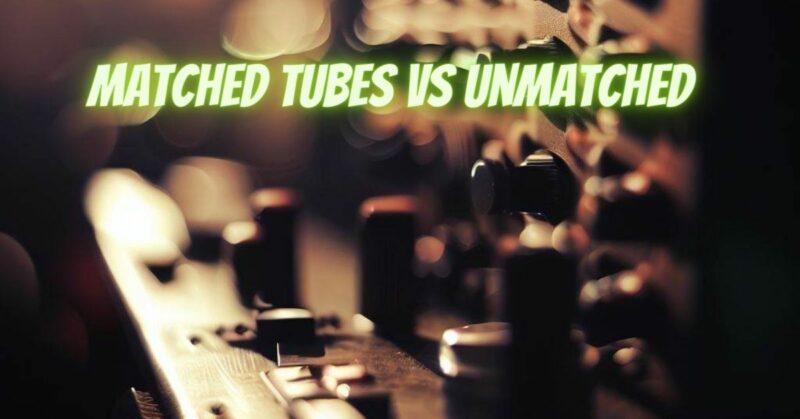In the world of tube-based audio systems, the debate between using matched tubes and unmatched tubes has been a long-standing topic of discussion among audiophiles and musicians. Vacuum tubes, also known as valves, play a vital role in shaping the sound in guitar amplifiers, preamps, and high-fidelity stereo systems. This article aims to shed light on the differences between matched tubes and unmatched tubes, exploring their impact on audio performance and helping users make informed decisions about their audio setups.
Matched Tubes: What Are They?
Matched tubes refer to a set of vacuum tubes that have undergone a process of selection to ensure they possess similar electrical characteristics. These parameters may include filament voltage, current draw, gain, and transconductance (mutual conductance). The goal of tube matching is to achieve uniformity in tube behavior, resulting in balanced amplification across all channels and a harmonious audio output.
The Matching Process
Tube manufacturers or specialized technicians perform tube matching through various methods, including tube testers and electronic measuring equipment. Tubes that fall within a certain percentage range of the specified parameters are grouped together and labeled as a matched set. These sets are then offered to users seeking to achieve precise balance in their audio systems.
Advantages of Matched Tubes
- Balanced Sound: Matched tubes work together harmoniously, delivering a more balanced sound across all channels. This leads to a uniform listening experience and helps eliminate potential imbalances in the audio output.
- Reduced Noise and Distortion: By maintaining uniform amplification characteristics, matched tubes generate less noise and distortion in the audio signal. This is especially important in high-fidelity audio systems, where minimizing unwanted artifacts is crucial.
- Improved Channel Tracking: In stereo systems, matched tubes contribute to better channel tracking, enhancing stereo imaging and soundstage accuracy. This allows the listener to perceive a more realistic spatial representation of the sound.
Unmatched Tubes: What Are They?
Unmatched tubes, as the name suggests, are individual vacuum tubes that have not undergone the process of tube matching. They are used as single units without specific consideration for matching their electrical characteristics.
Implications of Using Unmatched Tubes
- Variable Performance: Unmatched tubes can exhibit slight variations in amplification behavior, leading to possible discrepancies in sound quality between different channels.
- Potential Imbalance: In power amplifier applications, using unmatched tubes may result in uneven load distribution, potentially stressing some tubes more than others.
- Cost-Effectiveness: Unmatched tubes are generally more affordable than matched sets. This can be advantageous for those on a budget or when specific sound variations are desired.
Choosing Between Matched and Unmatched Tubes
The choice between matched and unmatched tubes depends on the individual’s audio requirements, preferences, and the specific application. Here are some considerations:
- High-End Audio: For high-fidelity stereo systems and critical listening environments, matched tubes may be preferred to ensure the highest level of sound quality and balance.
- Guitar Amplifiers: In guitar amps, where the tone and distortion characteristics are often sought after, some musicians may deliberately use unmatched tubes to achieve unique sonic characteristics.
- Budget Constraints: If budget limitations are a concern, using individual, unselected tubes may be a more cost-effective option.
In conclusion, the choice between matched tubes and unmatched tubes ultimately depends on the specific audio setup and the listener’s preferences. Matched tubes are designed to provide balanced amplification, reduced noise, and improved stereo imaging, making them an excellent choice for high-fidelity audio systems. However, for applications where distinct tonal variations are desired or cost constraints exist, using unmatched tubes can still deliver a satisfying audio experience. Ultimately, both matched and unmatched tubes have their place in the audio world, allowing users to tailor their setups to their individual tastes and priorities.


